Celts In Poland: Iron Smelting Furnaces Used By Celts 2,400 Years Ago – Unearthed
Jan Bartek - AncientPages.com - Science in Poland reports that the remains of twelve iron smelting furnaces used by the Celts 2,400 years ago have been discovered in archaeological excavations in the village of Warkocz near Strzelin in southwest Poland.
 Bird's eye view of an archaeological excavation, in which a Celtic metallurgical workshop is visible. Credit: Stanisław Rzeźnik
Bird's eye view of an archaeological excavation, in which a Celtic metallurgical workshop is visible. Credit: Stanisław Rzeźnik
"The iron smelting furnaces that we discovered in Warkocz most probably come from this earliest phase of their stay in the lands of modern-day Poland,” said Dr. Przemysław Dulęba from the Institute of Archaeology of the University of Wrocław, who led the works.
The Celts spread across almost all of Europe, north of the Alps, in the mid 1st millennium BC. They reached the areas of modern-day Silesia and Małopolska at the turn of the 4th century BC.
After their arrival, they introduced numerous innovations in Europe. They were the first to shoe horses,
they popularised the saddle and created the first chain mail. However, "the time of their arrival is a still poorly researched and mysterious period in the prehistory of southern and central Poland," according to Dr. Duleba.
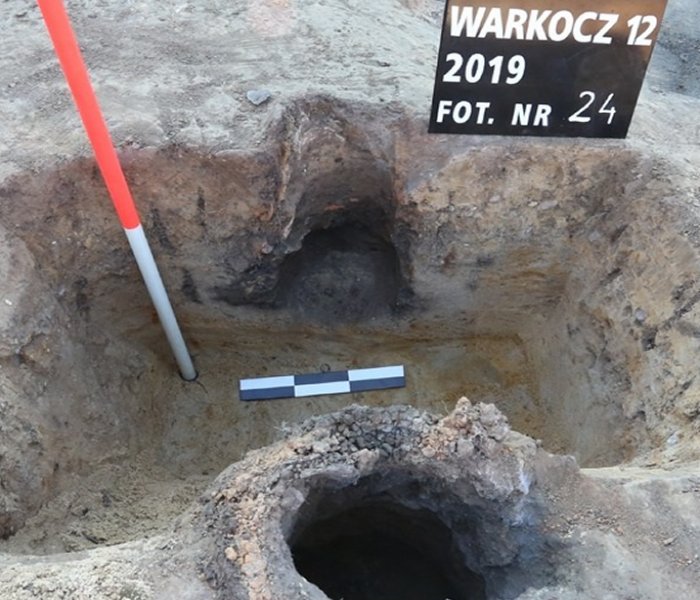 Warkocz near Strzelin (southwestern Poland) - Celtic industrial center – metal and ceramic production, excavations in 2019. Image credit: Institute of Archaeology, University of Wroclaw
Warkocz near Strzelin (southwestern Poland) - Celtic industrial center – metal and ceramic production, excavations in 2019. Image credit: Institute of Archaeology, University of Wroclaw
The furnaces were dug deep into the ground, and their interior lined with pugging (an insulating layer containing clay). Only a very small part protruded from the surface of the earth. Inside, single pieces of melted iron and slag were found.
Very similar clusters of furnaces, in terms of both form and spatial arrangement, are known from Czechia.
See also:
Puzzle Of The Bull Rock Cave – Ancient Mass Grave Remains Unexplained
Anartes: Forgotten Celtic Tribe And The Hercynian Forest With Strange Animals
Gundestrup Cauldron: Great Gilded Silver Vessel Decorated With Scenes Derived From Celtic Mythology
Objects dating back to the 4th century BC found alongside the furnaces, including fragments of ceramic vessels, metal ornaments, and clothing items as well as garment clasps, convinced the archaeologists that they were used by the Celts.
”Interestingly, bloomeries (metallurgical furnaces - PAP) from the Roman period, i.e. a few hundred years later, were single-use installations,” said Dr. Dulęba, adding that this is proof of the Celts` great proficiency in the field of metallurgy.
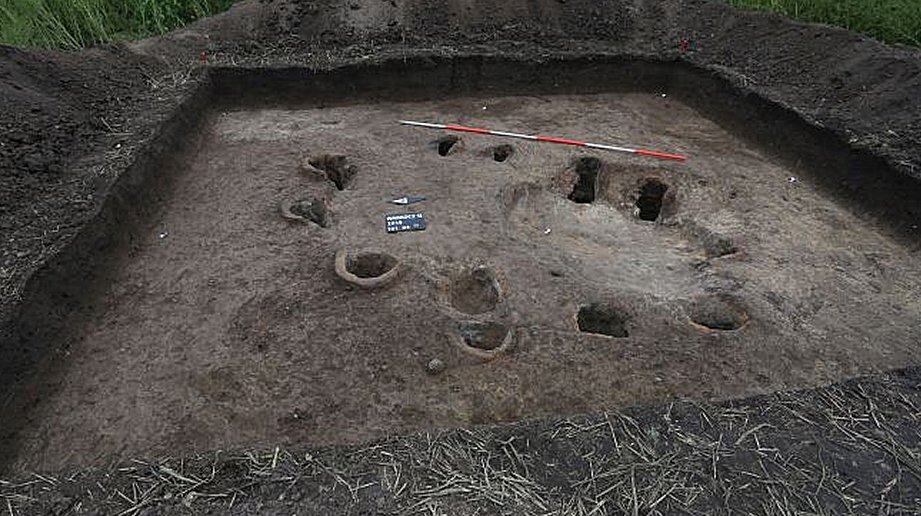 Archaeological excavation with relics of a metallurgical workshop discovered in Warkocz in Lower Silesia. Credit: Stanisław Rzeźnik
Archaeological excavation with relics of a metallurgical workshop discovered in Warkocz in Lower Silesia. Credit: Stanisław Rzeźnik
For now, researchers have opened only one small archaeological excavation but Dr. Dulęba says he believes there could be more furnaces in the area.
The archaeologists chose the excavation site after using a magnetic method that registers traces of old buildings and structures that were once strongly exposed to high temperatures.
See Also: More Archaeology News
”If expert research in the form of analyses and radiocarbon dating of burnt wood residues from furnaces confirms our assumption, we will be able to state with certainty that this is the first well documented Celt metallurgical workshop in modern-day Poland,” Dr. Dulęba said.
The oldest artifacts found in the settlement come from the second half of the 3rd century BC.
Written by Jan Bartek - AncientPages.com Staff Writer
More From Ancient Pages
-
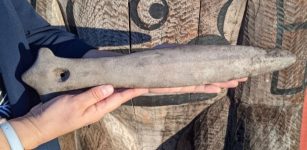 Unique Ancient Coast Salish War Club Accidently Discovered In British Columbia Backyard
Archaeology | Mar 22, 2022
Unique Ancient Coast Salish War Club Accidently Discovered In British Columbia Backyard
Archaeology | Mar 22, 2022 -
 2000-Years Old Road Was Discovered In Manisa Province,Turkey
Archaeology | Aug 14, 2017
2000-Years Old Road Was Discovered In Manisa Province,Turkey
Archaeology | Aug 14, 2017 -
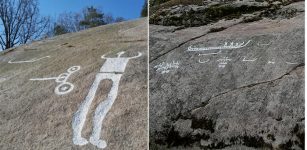 Huge Never-Before-Seen Ancient Petroglyphs Discovered In Kville, Bohuslän, Sweden
Archaeology | May 18, 2023
Huge Never-Before-Seen Ancient Petroglyphs Discovered In Kville, Bohuslän, Sweden
Archaeology | May 18, 2023 -
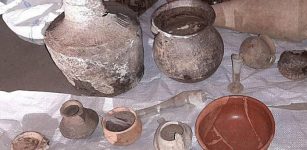 Europol Reports: ‘Millions’ In Stolen Treasures After Busting Crime Gang In Bulgaria – Recovered
Archaeology | Jul 4, 2020
Europol Reports: ‘Millions’ In Stolen Treasures After Busting Crime Gang In Bulgaria – Recovered
Archaeology | Jul 4, 2020 -
 Unusual Rock With Ancient Paintings Discovered By Hiker In Norway
Archaeology | Jun 23, 2023
Unusual Rock With Ancient Paintings Discovered By Hiker In Norway
Archaeology | Jun 23, 2023 -
 Science Unravels Some Secrets Of Mysterious Shipwreck Gribshunden
Archaeology | Sep 17, 2022
Science Unravels Some Secrets Of Mysterious Shipwreck Gribshunden
Archaeology | Sep 17, 2022 -
 Ancient City Of Metropolis: Ruins With Traces Of The Hittites, Hellenistic, Roman, Byzantine And Ottoman Empires
Archaeology | Jan 8, 2018
Ancient City Of Metropolis: Ruins With Traces Of The Hittites, Hellenistic, Roman, Byzantine And Ottoman Empires
Archaeology | Jan 8, 2018 -
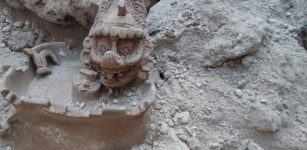 Unique Statue Of Mayan God K’awiil Associated With Lightning, Serpents, Fertility, Maize, Royal Lineage Found On Maya Train Route
Archaeology | May 17, 2023
Unique Statue Of Mayan God K’awiil Associated With Lightning, Serpents, Fertility, Maize, Royal Lineage Found On Maya Train Route
Archaeology | May 17, 2023 -
 Mystery Of The Banshee – Is The Celtic Death Messenger Linked To The Tuatha De’Dannan Race?
Celtic Mythology | Oct 25, 2015
Mystery Of The Banshee – Is The Celtic Death Messenger Linked To The Tuatha De’Dannan Race?
Celtic Mythology | Oct 25, 2015 -
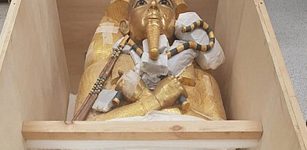 King Tutankhamun’s Large Golden Coffin Was Moved For Restoration
Archaeology | Jul 18, 2019
King Tutankhamun’s Large Golden Coffin Was Moved For Restoration
Archaeology | Jul 18, 2019 -
 Kahina – The Prophetic Berber Queen Who Resisted The Muslim Invasions Of The Numidia Kingdom
Featured Stories | Aug 14, 2021
Kahina – The Prophetic Berber Queen Who Resisted The Muslim Invasions Of The Numidia Kingdom
Featured Stories | Aug 14, 2021 -
 Evidence Of Biblical Kingdom Of Edom In Arava Desert – Discovered
Archaeology | Sep 23, 2019
Evidence Of Biblical Kingdom Of Edom In Arava Desert – Discovered
Archaeology | Sep 23, 2019 -
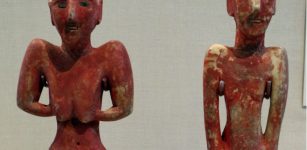 Male-Female Roles 7,000 Years Ago Were Less Traditional Than Previously Thought – New Study Reveals
Archaeology | Jun 30, 2022
Male-Female Roles 7,000 Years Ago Were Less Traditional Than Previously Thought – New Study Reveals
Archaeology | Jun 30, 2022 -
 Sword-Kladenets – Hidden Treasure Awaiting A Worthy Hero
Featured Stories | Feb 15, 2021
Sword-Kladenets – Hidden Treasure Awaiting A Worthy Hero
Featured Stories | Feb 15, 2021 -
 Homo Sapiens Survived In The Kalahari Desert More Than 20,000 Years Ago – Stone Age Discovery Shows
Archaeology | Aug 17, 2022
Homo Sapiens Survived In The Kalahari Desert More Than 20,000 Years Ago – Stone Age Discovery Shows
Archaeology | Aug 17, 2022 -
 Mystery Of The Knights Templar – Secret Mission And Loss Of A Great Treasure – Part 2
Ancient Mysteries | Aug 23, 2019
Mystery Of The Knights Templar – Secret Mission And Loss Of A Great Treasure – Part 2
Ancient Mysteries | Aug 23, 2019 -
 On This Day In History: Michael Servetus Burned At The Stake ‘Atop A Pyre Of His Own Books’ – On Oct 27, 1553
News | Oct 26, 2016
On This Day In History: Michael Servetus Burned At The Stake ‘Atop A Pyre Of His Own Books’ – On Oct 27, 1553
News | Oct 26, 2016 -
 Does A Renaissance Painting Offer Proof Of Unknown Advanced Technology?
Ancient Mysteries | Aug 7, 2018
Does A Renaissance Painting Offer Proof Of Unknown Advanced Technology?
Ancient Mysteries | Aug 7, 2018 -
 Lost Medieval Home Of The Lords Of The Isles – Reconstructed Virtually
Archaeology | May 29, 2019
Lost Medieval Home Of The Lords Of The Isles – Reconstructed Virtually
Archaeology | May 29, 2019 -
 On This Day In History: King Alexander II Was Crowned At Scone, Scotland – On Dec 6, 1214
News | Dec 6, 2016
On This Day In History: King Alexander II Was Crowned At Scone, Scotland – On Dec 6, 1214
News | Dec 6, 2016
